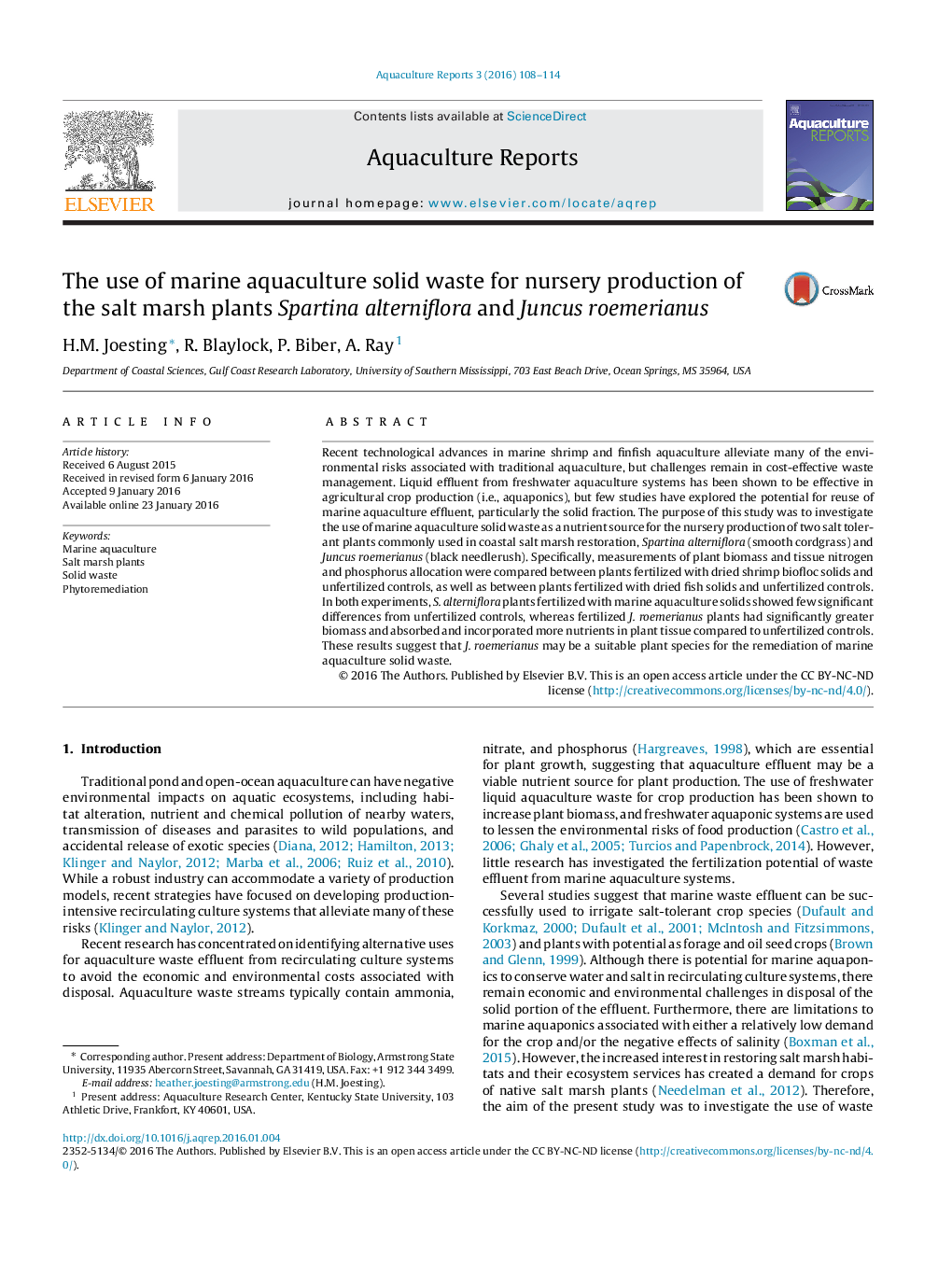| کد مقاله | کد نشریه | سال انتشار | مقاله انگلیسی | نسخه تمام متن |
|---|---|---|---|---|
| 4438006 | 1620277 | 2016 | 7 صفحه PDF | دانلود رایگان |

• A study was conducted to determine if marine aquaculture solid waste could be used as a fertilizer for two salt marsh plants commonly used in coastal restoration, Spartina alterniflora and Juncus roemerianus.
• The repurposing of waste may increase the sustainability and profitability of marine aquaculture systems by reducing environmental and economic challenges with solid waste disposal.
• Spartina alterniflora showed little response in terms of plant biomass and nutrient allocation to nutrient additions from both marine shrimp and finfish solids while J. roemerianus plants fertilized with marine shrimp and finfish solids had significantly greater biomass and nutrient allocation responses compared to unfertilized controls.
• Results from the study suggest that marine aquaculture solid waste provides essential nutrients required for plant growth and has the potential to be repurposed into a fertilizer for nursery production of J. roemerianus.
Recent technological advances in marine shrimp and finfish aquaculture alleviate many of the environmental risks associated with traditional aquaculture, but challenges remain in cost-effective waste management. Liquid effluent from freshwater aquaculture systems has been shown to be effective in agricultural crop production (i.e., aquaponics), but few studies have explored the potential for reuse of marine aquaculture effluent, particularly the solid fraction. The purpose of this study was to investigate the use of marine aquaculture solid waste as a nutrient source for the nursery production of two salt tolerant plants commonly used in coastal salt marsh restoration, Spartina alterniflora (smooth cordgrass) and Juncus roemerianus (black needlerush). Specifically, measurements of plant biomass and tissue nitrogen and phosphorus allocation were compared between plants fertilized with dried shrimp biofloc solids and unfertilized controls, as well as between plants fertilized with dried fish solids and unfertilized controls. In both experiments, S. alterniflora plants fertilized with marine aquaculture solids showed few significant differences from unfertilized controls, whereas fertilized J. roemerianus plants had significantly greater biomass and absorbed and incorporated more nutrients in plant tissue compared to unfertilized controls. These results suggest that J. roemerianus may be a suitable plant species for the remediation of marine aquaculture solid waste.
Journal: Aquaculture Reports - Volume 3, May 2016, Pages 108–114